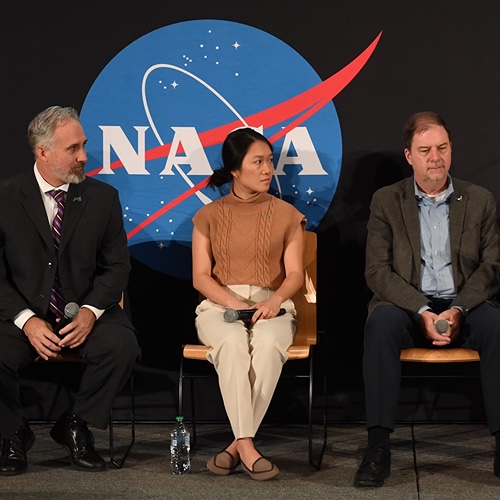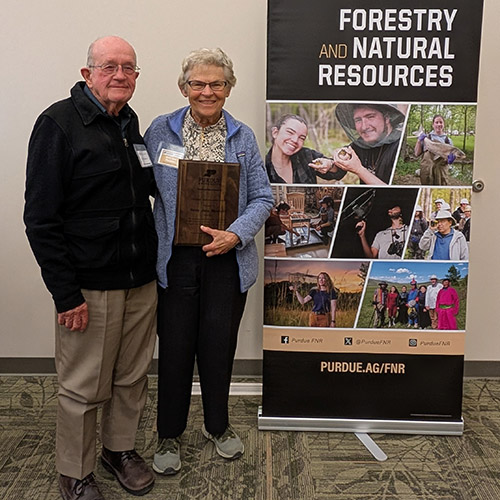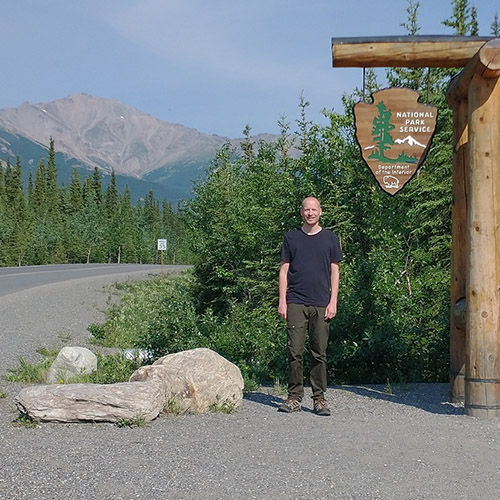Meier Shares Relationships in FNR Opened Career Opportunities
Degree: MS Forestry
I have always seen my career as being a mix of having a good idea of what I'm interested and what I'm good at while being willing to take an opportunity when it comes. I've also realized that I can't wait around for someone to tell me what I need to do, but that there are a lot of opportunities for people who are willing to learn something new and who can take initiative. I came to Purdue to work as a forestry specialist at Martell Forest in 2007 after completing my BS at the University of Wisconsin. I didn't really know anything about Purdue at that point, and I would have liked to stay in Wisconsin, but it was a good opportunity to get my first full time job in the field and to get some experience, so I took it.
The experiences I gained from that position, and, more importantly, the relationships that I built in FNR, provided me with the opportunity to start on a Master's at Purdue in 2010 and to receive a van Eck scholarship through the Hardwood Tree Improvement and Regeneration Center. When I graduated in 2012, I again wasn't sure where I wanted to be. Because my forest management philosophy was (and is) really centered around management in the context of ecosystem health and resilience, I begin to feel that work with a federal agency was the career path that I wanted to take. I applied for dozens of federal forestry jobs before graduating without any success, and another opportunity fell right into my lap at Purdue, as the coordinator for the Hardwood Ecosystem Experiment (HEE). I was offered that position the day I defended my thesis in 2012.
Managing the HEE was an incredible experience for me, because it really stretched me in ways that I didn't feel comfortable being stretched, and regularly took me out of my comfort zone. My training was as a forester, but this job required me to learn how to plan projects, to run meetings, to manage budgets and people. It required me to learn about wildlife and to learn how to translate what I knew as a forester into information that was useful to people with a wide range of backgrounds. It also gave me an invaluable opportunity to work directly with FNR leadership and senior staff in the Indiana DNR.
The way that they led and managed people helped me develop a better sense of leadership. Though I probably would never have imagined that this position would be a good fit for me, it was critical for my development as a natural resources professional.
I worked for the HEE until January of 2015, when I got an opportunity to move back to Wisconsin. I took a job as a forester/forest ecologist with Audubon Minnesota working in floodplain forests on the Upper Mississippi River, primarily to assist the Upper Mississippi River National Wildlife and Fish Refuge develop their program of forest restoration on the Refuge. I was just getting my feet under me when a new opportunity came up. The forester for the Corps of Engineers, whose office was just 15 minutes from where we lived and with whom I worked regularly, decided to take another position. Though I saw a lot of potential for the job with Audubon Minnesota, I still had in the back of my mind an interest in working for a federal agency, so I couldn't pass up the opportunity.
So that's where I am today. I work as a forester for the Corps of Engineers managing floodplain forests for wildlife habitat on the Upper Mississippi River in Minnesota, Wisconsin and Iowa. We have a small office, so I get to do everything from managing forest inventory and tree planting contracts to developing research projects addressing management questions. There's hardly a day where I do the same thing, and I work with dozens of different people from multiple agencies, universities and non-profit partners on a regular basis. During the summers, I'm on a boat a couple days a week getting to field sites, and during the winter, I'm working on developing management plans and processing inventory data to inform our management.






